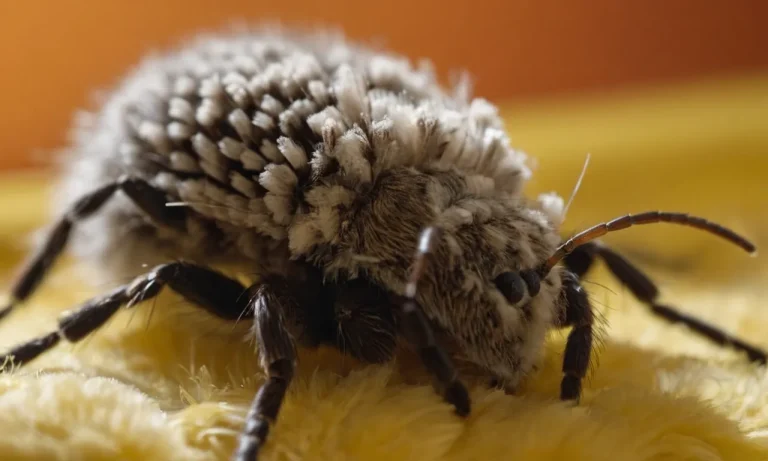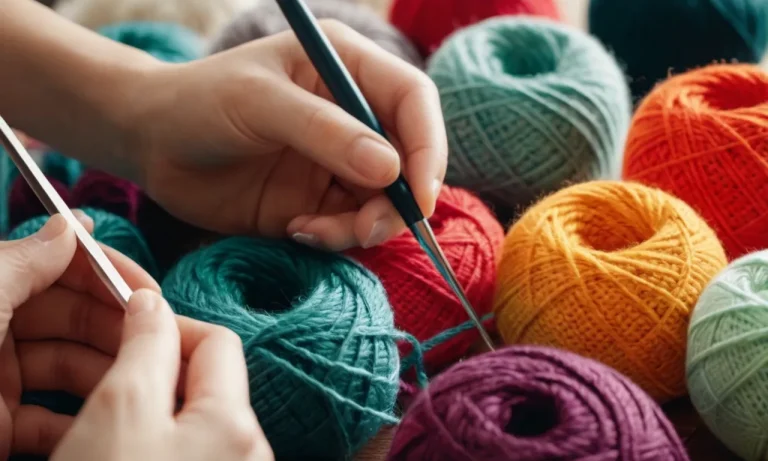We’ve all seen it – our furry friend gently carrying around a beloved stuffed critter or toy as if it was their pup. This common behavior often has humans wondering: why does my dog hold a stuffed animal in his mouth?
If you’re short on time, here’s a quick answer to your question: Dogs hold stuffed animals in their mouths because it satisfies natural urges like chewing, appeases early bonding instincts, or simply comforts them when they feel anxious or playful.
In this comprehensive article, we’ll explore the top reasons behind this curious canine habit. We’ll look at key factors like breed traits, maternal behaviors, the soothing effects of chewing and more so you can understand exactly what’s going on when your dog grabs that plush plaything.
Chewing Instinct
Puppies Teething
Puppies begin teething around 3-4 weeks old, which is an uncomfortable process that causes them to chew on items to relieve sore gums. Stuffed animals provide the perfect teething solution – they are soft, pliable, and easy to latch onto.
Puppies typically teethe until they are 6-8 months old, so having sturdy stuffed animal toys around helps them get through this phase without destroying household objects.
Veterinarians recommend having an assortment of safe, durable chew toys like Kong brand stuffed animals made of tough materials. The American Kennel Club also suggests freezing stuffed toys to soothe sore gums. Just make sure to supervise playtime to avoid swallowed pieces!
Stress Relief
Dogs may pick up and carry stuffed animals for stress relief, much like humans hug pillows or stuffed animals for comfort. The soft texture and ability to latch onto the toy can satisfy a dog’s innate need to grab something with their mouth when anxious. Reasons for stress include:
- Being left alone during separation anxiety
- Exposure to loud noises like fireworks or thunder
- Traveling to unfamiliar places
- Adjusting to a new home, animal, or family member
So if you notice this behavior paired with signs of stress like panting, pacing, whining, or trembling, a stuffed animal can help your dog self-soothe. Pay attention to when the behavior happens to determine the trigger.
Then you can address the anxiety through training and providing a comfortable stuffed toy for your dog to carry around.
Some studies reveal that certain textures and stuffing materials are more effective at relieving doggie stress. For example, a 2019 AKC article shared findings that faux fur and fleece fabrics reduced stress hormones by over 50%.
And toys filled with a heart-rate simulating material called “Primal Paste” helped lower anxiety more effectively. So pay attention to which stuffed animals your dog favors for clues about what works best for their needs.
With some dogs, the stress relief from carrying a stuffed toy can become an obsessive behavior. If your dog won’t put the toy down or plays so roughly they destroy it quickly, talk to your vet. They can assess anxiety levels and suggest training aids, calming treats, anxiety vests, or medication if needed.
Don’t hesitate to reach out for help ensuring your pup stays happy and healthy.
Mothering Behaviors
Carrying Puppies
When mother dogs pick up their puppies in their mouths, they are exhibiting a natural instinct to transport their young to a safe location. This behavior likely stems from their early ancestors who had to carry their pups from danger.
Even though our domestic dogs live very different lives than their wolf relatives, this instinct remains.
Some key reasons mother dogs may pick up or carry toys or stuffed animals in their mouths include:
- Practice – They may see the stuffed animal like a puppy that needs to be transported.
- Self-soothing – The tactile sensation of carrying something may release oxytocin and provide comfort.
- Maternal instinct – Their inner drive to nurture may be expressed even without puppies to care for.
As dogs mature, some may carry on this oral behavior even after raising puppies. It taps into a deep-rooted natal behavior we have selectively bred to be very strong in our canine companions.
Transitional Objects
There is a developmental phase in young mammals called the “transitional object stage” where infants become attached to a specific object, like a blanket or soft toy. This occurs around 5-18 months and allows the young animal to self-soothe when their mother is not nearby.
Puppies may pick a favorite stuffed toy for similar reasons. And some dogs appear to remain in this phase into adulthood if the transitional object, such as a beloved squeaky toy, continues to provide them comfort.
So that tattered plushy your pooch anxiously sucks on may be akin to a child’s security blanket.
Some indications your mature dog views certain toys as transitional objects include:
- Strong attachment to a specific stuffed animal or toy type
- Distress when it is missing or destroyed
- Carrying it around constantly for self-soothing
If your adult dog has a clear favorite stuffed buddy, it is perfectly healthy. Let them enjoy their “loveys” just like a child does!
Breed Differences
When it comes to a dog holding a stuffed animal in their mouth, certain breeds are more likely to exhibit this behavior than others. Understanding some key breed differences can provide insight into why your pooch might carry around their favorite plush toy.
Herding Breeds
Herding dog breeds, like Collies, Australian Shepherds, and Corgis, are hardwired to use their mouths to herd livestock. Carrying around a stuffed critter taps into herding instincts and satisfies their intrinsic need to “hold” something in their mouth and transport it from place to place.
Sporting Breeds
Sporting breeds that are bred to retrieve game, such as Labrador Retrievers, Golden Retrievers, and Spaniels, often carry toys in their mouths since it’s simply in their nature. Their origins give them a genetic edge to use their mouths to fetch and return.
So don’t be surprised if your retriever wants to greet you at the door with a plushy prize to show off!
Terriers
Feisty terriers like Jack Russell Terriers, Boston Terriers, and West Highland White Terriers were originally bred to hunt vermin and small prey. Carrying around a stuffed toy allows them to simulate capture through their grab and shake instincts.
It’s one way to tap into their background as tenacious hunters.
Comparison of Select Breeds
| Breed | Origin | Reason for Carrying Toys |
|---|---|---|
| Labrador Retriever | Bred to retrieve downed birds for hunters | Strong retrieval instincts to carry objects in mouth |
| Border Collie | Bred to herd sheep using “eye” and nipping behaviors | Hardwired herding behaviors to transport objects |
| Jack Russell Terrier | Bred to hunt small prey like foxes and rodents | Simulates capture of prey through shaking toy |
While the underlying breed tendencies might promote toy carrying, other factors like socialization, training, and individual personality can also influence this behavior in dogs. So if your laidback Labradoodle unexpectedly starts hauling around stuffed animals, it could be for reasons beyond just their background.
Still, breed can provide insight into why dogs exhibit certain behaviors. Knowing what your dog was originally bred to do can help explain why they might stockpile Easter bunnies and teddy bears! Their mouths might be hardwired for herding, retrieving, or hunting – tasks that their new “baby” fills when their genetic instincts kick in!
👍😊🐩
Fun and Games
Having a Grand ‘Ole Time
When Fido grabs his favorite stuffed critter and parades around with it hanging from his mouth, he’s not looking ominous or threatening despite appearances. More often than not, he’s having a grand ole time playing with his toy!
Dogs love to play tug-of-war and keep away with their stuffed pals – it satisfies their natural instinct to grab, shake, and proudly carry things.
According to the American Kennel Club, when dogs were evolving alongside humans, those that carried objects like prey demonstrated value to us as hunters. We’ve selectively bred dogs to enhance this retrieving behavior.
So in a sense, when your dog grabs his favorite plushie, shakes it with vigor, and prances around holding it proudly, he’s showing his innate skills…albeit without an actual hunting purpose anymore. It’s just good wholesome fun with his special toy friend!
Tug-of-War and Keep Away
Let’s not forget the ever-popular games of tug and keep away! When your dog clamps down on his plush parrot or fuzzy bone, he’s often initiating a rousing match of tug-of-war, hoping you’ll grab the other end.
And if you try to take it away, then you’ve started an exciting round of keep away as he playfully dodges your attempts to snatch his toy.
These back and forth chasing games fulfill dogs’ predatory drives without having to hunt real prey. It’s enjoyable physical and mental stimulation for your pup. So let Fido have his stuffed cohort and don’t worry if he prances around holding it gingerly but firmly in his mouth – it’s all just lighthearted fun and games!
Conclusion
As you can see, multiple factors explain why our furry friends feel compelled to gently hold beloved stuffed pals. From appeasing instincts to sheer enjoyment, this behavior allows dogs to satisfy needs while also having fun.
Now that you understand the psychology behind the stuffed animal habit, you can provide appropriate outlets for your pup. Offer an array of safe, durable chew toys to meet chewing urges. Engage your dog in active play to tap into their natural, goofy energy.
And of course, capture adorable photos the next time you spot your best friend tenderly toting around their favorite fluffy friend!







